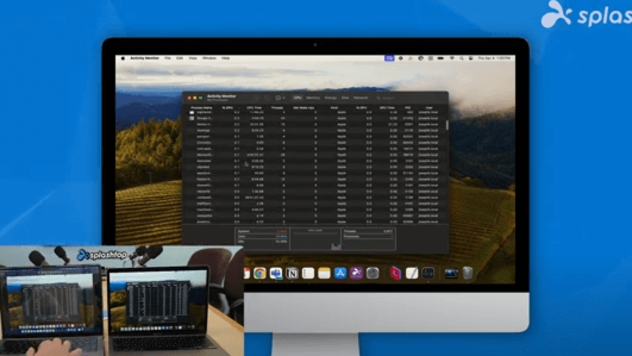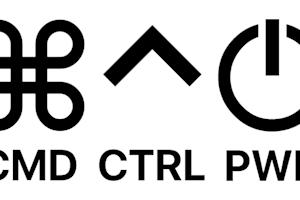
In the realm of remote access technology, unattended access stands out for its ability to allow remote control of devices without an end-user's direct involvement. This facet of remote access is crucial for tasks that require round-the-clock management, such as server maintenance, software updates, and system monitoring across various sectors.
From IT support streamlining operations outside regular business hours to healthcare professionals accessing vital systems and educators managing virtual labs, unattended access is proving essential. In this article, we'll explore the nuts and bolts of unattended access, its diverse applications across industries, and why it's becoming a cornerstone of efficient, uninterrupted business operations.
Understanding Unattended Access
What is Unattended Access?
Unattended access is a feature within remote access technology that allows a user to connect to and control another computer or device without requiring someone at the remote end to grant access. This capability is invaluable for managing multiple devices, conducting maintenance, or ensuring systems remain operational regardless of human presence.
The distinction between unattended and attended access lies in the necessity of human intervention. Attended access, often used in support scenarios, requires a person at the remote device to actively consent to the remote connection. In contrast, unattended access bypasses this need, making it ideal for accessing servers, workstations, and other devices that may not have someone readily available to grant permission.
Setting up unattended access involves several technical requirements to ensure a seamless and secure connection. Key components include:
Remote Access Software: Solutions like Splashtop are designed to facilitate unattended access by providing the necessary tools and interfaces for remote control.
Permissions and Access Control: Administrators must configure access permissions, ensuring only authorized users can initiate unattended sessions.
Security Protocols: Robust security measures, including encryption, multi-factor authentication, and secure password practices, are essential to protect against unauthorized access.
Splashtop plays a crucial role in delivering secure unattended access. It offers a blend of user-friendly interfaces, comprehensive security features, and robust performance, ensuring that businesses can leverage unattended access effectively and safely. With these solutions, organizations can maintain continuity, enhance productivity, and ensure their systems are always within reach, regardless of the physical presence of IT staff or end-users.
How Does Unattended Access Work?
Unattended access enables users to remotely connect to a device without needing someone on the other end to grant permission. This process typically involves installing a remote access software client on the target device, such as a computer or server. Once installed, the device can be configured to allow access at any time. Users authenticate themselves with secure credentials, ensuring that only authorized personnel can initiate a connection.
Once connected, users can control the remote device as if they were physically present, performing tasks such as file transfers, software installations, and system diagnostics. This functionality is particularly valuable for IT support teams and managed service providers (MSPs) who need to perform maintenance or troubleshooting outside regular business hours, ensuring minimal disruption to business operations.
Benefits of Unattended Access
Unattended access offers numerous advantages for businesses and IT professionals. One of the primary benefits is the ability to perform remote maintenance and support tasks at any time, without requiring someone to be physically present at the remote device. This flexibility ensures that IT issues can be addressed promptly, minimizing downtime and maintaining productivity.
Another significant benefit is cost savings. By enabling remote troubleshooting and maintenance, businesses can reduce travel expenses and the need for on-site visits. This is particularly beneficial for managed service providers (MSPs) who support multiple clients across different locations.
Unattended access also enhances efficiency. IT teams can schedule updates, installations, and other maintenance tasks during off-peak hours, ensuring minimal disruption to daily operations. This proactive approach helps maintain system health and prevents potential issues from escalating.
Additionally, unattended access supports a seamless remote work environment. Employees can access their workstations from any location, enabling greater flexibility and productivity. With robust security measures in place, such as encryption and multi-factor authentication, businesses can ensure that remote sessions are secure and compliant with data protection regulations.
Overall, unattended access empowers businesses with the tools to maintain operational continuity, reduce costs, and enhance the efficiency of their IT support processes.
Key Features of Unattended Access Solutions
Unattended access solutions are not just about providing remote connectivity; they're about ensuring that such connectivity is efficient, user-friendly, and, above all, secure. Here are some of the essential features that make unattended access solutions stand out:
Multi-Platform Support: The ability to connect across various operating systems—be it Windows, macOS, Linux, iOS, or Android—is fundamental. This ensures that users can access remote devices from any platform, breaking down compatibility barriers and enhancing flexibility.
Ease of Use: A straightforward, intuitive interface is crucial for ensuring that both IT professionals and non-technical users can navigate and utilize the software effectively. Solutions that minimize complexity while maximizing functionality tend to be more widely adopted.
Strong Encryption: Robust encryption protocols are the backbone of secure remote connections. Ensuring that all data transmitted between the local and remote device is encrypted, typically with 256-bit AES, safeguards against interception and unauthorized access.
User Authentication: Effective authentication mechanisms ensure that only authorized individuals can initiate unattended access sessions. This often involves a combination of credentials, such as usernames and complex passwords, to verify user identity.
The scalability and customization of unattended access solutions are equally important. Businesses evolve, and their remote access needs can change; solutions must be able to scale up to accommodate growing numbers of users and devices. Additionally, the ability to customize features and permissions allows organizations to tailor the solution to their specific operational needs, ensuring a more efficient and streamlined workflow.
Advanced security features further fortify unattended access solutions:
Two-Factor Authentication (2FA): Adding an extra layer of security, 2FA requires users to provide two different authentication factors to verify themselves. This significantly reduces the risk of unauthorized access.
Session Logging: Keeping detailed records of all unattended access sessions, including information on who accessed what and when, is crucial for audit trails and compliance. It provides transparency and can be instrumental in the event of security investigations.
End-to-End Encryption: Beyond standard encryption, end-to-end encryption ensures that data is only decrypted at the endpoints of a session, never in the middle, even by the service provider, offering maximum privacy and security.
These features collectively ensure that unattended access solutions not only provide the necessary functionality for remote management but also prioritize security and adaptability, aligning with the diverse needs and security requirements of modern organizations.
How to Set Up Unattended Access Using Splashtop
Setting up unattended access using Splashtop is a straightforward process that ensures you can access your devices remotely at any time. Follow these steps to get started:
Sign Up for Splashtop: Create a Splashtop account by signing up on the Splashtop website. Choose the plan that best suits your needs.
Download and Install Splashtop Streamer: On the devices you want to access remotely, download the Splashtop Streamer application. You can also mass deploy the Splashtop Streamer to all your managed machines.
Configure Security Settings: Ensure your remote sessions are secure by configuring security settings such as enabling two-factor authentication (2FA) and setting up a strong, unique password.
Access Your Device Remotely: On your remote computer or mobile device, download and install the Splashtop Business app. Log in with your Splashtop account credentials. You should now see the devices you set up with the Splashtop Streamer listed in your account.
Start a Remote Session: Click on the device you wish to access to start a remote session. You can now control the device as if you were physically present, performing tasks like file transfers, software updates, and system diagnostics.
By following these steps, you can efficiently set up unattended access using Splashtop, ensuring you have reliable and secure remote access to your devices whenever you need it.
Practical Application of Unattended Access
Unattended access technology has broad applications across various sectors, significantly impacting how organizations operate, troubleshoot, and deliver services. Here's a closer look at some of the key use cases:
IT and Technical Support
Remote Troubleshooting and Maintenance: IT professionals can remotely access servers and workstations to diagnose and resolve issues without needing the end-user to be present. This capability is invaluable for off-hours maintenance and support.
Automatic Software Updates and Patch Management: Unattended access facilitates the deployment of software updates and security patches across multiple devices, ensuring that all systems are up-to-date and secure without manual intervention.
Telecommuting and Remote Work
Accessing Office Computers: Employees working remotely can use unattended access to connect to their office computers, allowing them to use all their files and applications as if they were physically present in the office.
Flexible Work Arrangements: By enabling seamless access to corporate resources from anywhere, unattended access supports flexible work policies and contributes to maintaining business continuity under various circumstances.
Education and Training
Remote Software Access: Students and educators can access specialized software hosted on school computers from remote locations, facilitating hands-on learning in virtual labs and eliminating the need for physical presence.
System Administration: IT staff can manage and maintain educational institution systems, including updates and troubleshooting, without being on-site, ensuring the smooth operation of educational infrastructures.
Healthcare
Remote System Monitoring and Management: Healthcare IT professionals can remotely manage systems and devices critical to patient care, ensuring they operate without interruption.
Telehealth Support: Unattended access enables healthcare providers to remotely access medical software and patient records, supporting telehealth services and improving patient care by allowing consultations and monitoring to occur from any location.
Manufacturing and Industrial
Remote Equipment Monitoring: Engineers and technicians can monitor and manage industrial equipment from afar, keeping an eye on performance and operational data without needing to be on the factory floor.
Predictive Maintenance: By enabling remote access to equipment sensors and data analytics tools, unattended access allows for predictive maintenance, identifying potential issues before they lead to downtime, thus saving costs and enhancing efficiency.
These use cases illustrate the versatility and value of unattended access in streamlining operations, enhancing productivity, and ensuring continuity across diverse industries. By providing a reliable and secure means of managing devices and systems remotely, unattended access is reshaping the landscape of modern work and service delivery.
Best Practices for Secure Unattended Access
Implementing unattended access within an organization brings immense benefits, but it also introduces significant security considerations. Ensuring the security of unattended remote connections is paramount to protect sensitive data and systems from unauthorized access. Here are some best practices to achieve secure unattended access:
Robust Security Measures: The foundation of secure unattended access lies in implementing robust security protocols. This includes end-to-end encryption for all remote sessions, secure network configurations.
Strong Authentication Processes: The first line of defense in securing unattended access is a strong authentication mechanism. Utilize complex passwords that combine letters, numbers, and special characters, and ensure they are changed regularly. Implementing user access controls can further restrict access to sensitive systems and data, ensuring that users can only access the resources necessary for their roles.
Multi-Factor Authentication (MFA): Adding an additional layer of security, MFA requires users to provide two or more verification factors to gain access, drastically reducing the risk of unauthorized access. This could include something the user knows (a password), something the user has (a security token), or something the user is (biometric verification).
Regular Security Audits and Compliance: Conduct regular security audits to assess the effectiveness of your unattended access controls and identify any potential vulnerabilities. Ensure compliance with relevant data protection regulations, such as GDPR or HIPAA, to protect user data and avoid legal penalties.
Reputable Unattended Access Solutions: Choosing the right unattended access solution is critical. Opt for providers like Splashtop, known for their strong track record in security and reliability. Look for solutions that offer comprehensive security features, including session encryption, MFA, and detailed access logs for auditing purposes.
Education and Awareness: Educate users about the risks associated with unattended access and the importance of following security best practices. Regular training sessions can help users understand their role in maintaining security and encourage them to adopt secure behaviors.
Regular Updates and Patch Management: Ensure that all remote access software and the systems they connect to are regularly updated with the latest security patches. This helps protect against vulnerabilities that could be exploited by attackers.
By adhering to these best practices, organizations can leverage the benefits of unattended access while minimizing the associated security risks. A proactive approach to security, combined with the right tools and user education, is essential for maintaining the integrity and confidentiality of remote access sessions.
Try Splashtop’s Unattended Remote Access Solutions for Free
Unattended access revolutionizes the way we manage and interact with devices remotely, offering unparalleled convenience and efficiency for businesses, educators, IT professionals, and more. Its ability to provide secure, round-the-clock access to remote systems without the need for human intervention on the other end is a game-changer in today's fast-paced, digital world.
Discover how Splashtop's unattended access solutions can empower your organization to operate more flexibly and securely. Explore our range of products designed to meet diverse needs and challenges. Sign up for a free trial today and experience firsthand the difference Splashtop can make in streamlining your remote access and support capabilities.





